Understanding Schizoaffective Disorder
Learn about schizoaffective disorder
Schizoaffective disorder can be thought of as a combination of schizophrenia-like symptoms and symptoms that resemble a mood disorder. Like schizophrenia, people with schizoaffective disorder experience delusions and/or hallucinations. They may believe they have a special link to someone famous, or they may hear voices. Along with their delusions and/or hallucinations, people with schizoaffective disorder also experience fluctuating moods. These episodes of shifting moods can consist of depression, which involves a sad mood and low energy, mania, which involves excessive amounts of energy, or both. The other major difference between schizoaffective disorder and schizophrenia is duration. For someone with schizoaffective disorder, symptoms last no longer than six months, whereas schizophrenia symptoms can last longer than six months. Treatment exists to help individuals struggling with schizoaffective disorder better manage their lives.
Statistics
Statistics for schizoaffective disorder
Schizoaffective disorder is relatively rare. Over a person’s lifetime, he or she only has a 0.3 percent chance of developing the disorder. Women tend to be diagnosed with schizoaffective disorder more than males because of the depressive component of the disorder.
Causes & Risks
Causes & risk factors of schizoaffective disorder
Although little research has been done on the specific causes and risk factors of schizoaffective disorder, research does suggest that both genetic and environmental factors have an effect on a person’s chance of developing the disorder. These factors include:
Genetic: Having family members with a history of mental illness can increase a person’s chance of developing schizoaffective disorder. More specifically, people with a parent or sibling who has schizophrenia, bipolar disorder, or schizoaffective disorder are more likely to develop schizoaffective disorder themselves.
Environmental: Certain environmental risk factors for schizophrenia may also have an effect on a person’s risk of developing schizoaffective disorder. For example, children born to mothers who experience stress, infection, malnutrition, and diabetes are more at risk for schizophrenia and thus may be more at risk for schizoaffective disorder as well. Other factors, such as birth complications and having an older father, may also increase a person’s risk of developing schizoaffective disorder.
Risk Factors:
- Having a history of enduring a trauma
- Having been exposed to toxins or viruses while in utero
- Complications during childbirth
- Family history of schizoaffective disorder, schizophrenia, bipolar disorder, or another mental health condition
- Personal history of preexisting mental health condition or conditions
- Personal history of substance abuse
Signs and Symptoms
Signs & symptoms of schizoaffective disorder
Depending specific symptoms afflicting an individual, someone with schizoaffective disorder may experience differing combinations of the signs and symptoms below:
Positive symptoms: Positive symptoms are additional experiences or sensations that people with schizophrenia have that other people do not. These can include:
- Hallucinations
- Delusions
- Disorganized behavior
- Disorganized speech
Negative symptoms: Negative symptoms are the absence of certain behaviors, of which can include the following:
- Flat affect
- Unresponsiveness to stimuli
- Catatonia
Cognitive symptoms: Cognitive symptoms are those that interfere with thinking. Below are some examples of such symptoms:
- Disorganized thought processes, as manifested in speech or behavioral disorganization
- Flight of ideas or tangential thinking
- Poor memory
- Reduced processing speed
- Poor judgment or decision-making
Depressive symptoms: Depressive symptoms are those related to sad mood and reduced activity. The listed symptoms are examples of what can encompass a depressed mood:
- Loss of pleasure in activities one used to enjoy
- Sad mood
- Tearfulness
- Poor motivation
- Change in weight, appetite, or sexual desire
Manic symptoms: Manic symptoms are those involving excess energy. Those experiencing manic symptoms may display or experience the following:
- Excessive energy
- Reduced need for sleep
- Rapid speech
- Impulsivity
- Poor judgment
- Grandiosity or overinflated sense of one’s abilities
- Engaging in excessively risky behavior
Effects
Effects of schizoaffective disorder
If left untreated, the effects of schizoaffective disorder can have severe consequences, including:
- Loss of one’s job
- Strain on relationships
- Financial troubles
- Interaction with the legal system
- Homelessness
- Infection, such as HIV contracted during a risky sexual encounter(s)
- Suicidal thoughts or behaviors
Co-Occurring Disorders
Schizoaffective disorder and co-occurring disorders
While the presence of schizoaffective disorder rules out schizophrenia or another mood disorder, an initial diagnosis of schizoaffective disorder may be changed to fit symptoms as they develop. People who experience schizoaffective disorder may also meet criteria for the following disorders:
- Schizophrenia, if symptoms last longer than six months and if mood symptoms subside
- Anxiety disorder
- Obsessive-compulsive disorder
- Personality disorder
- Substance use disorder
- Post-traumatic stress disorder











